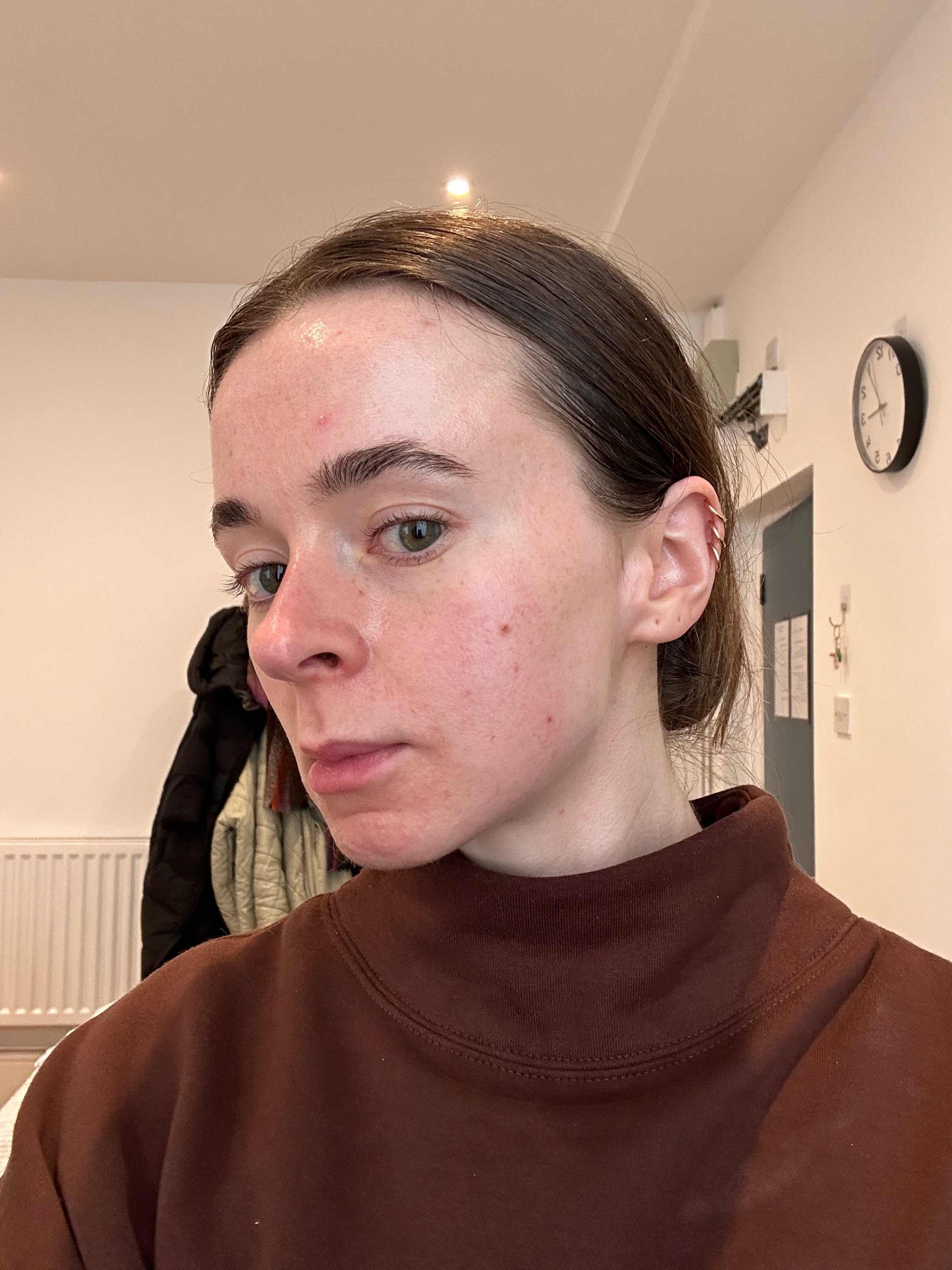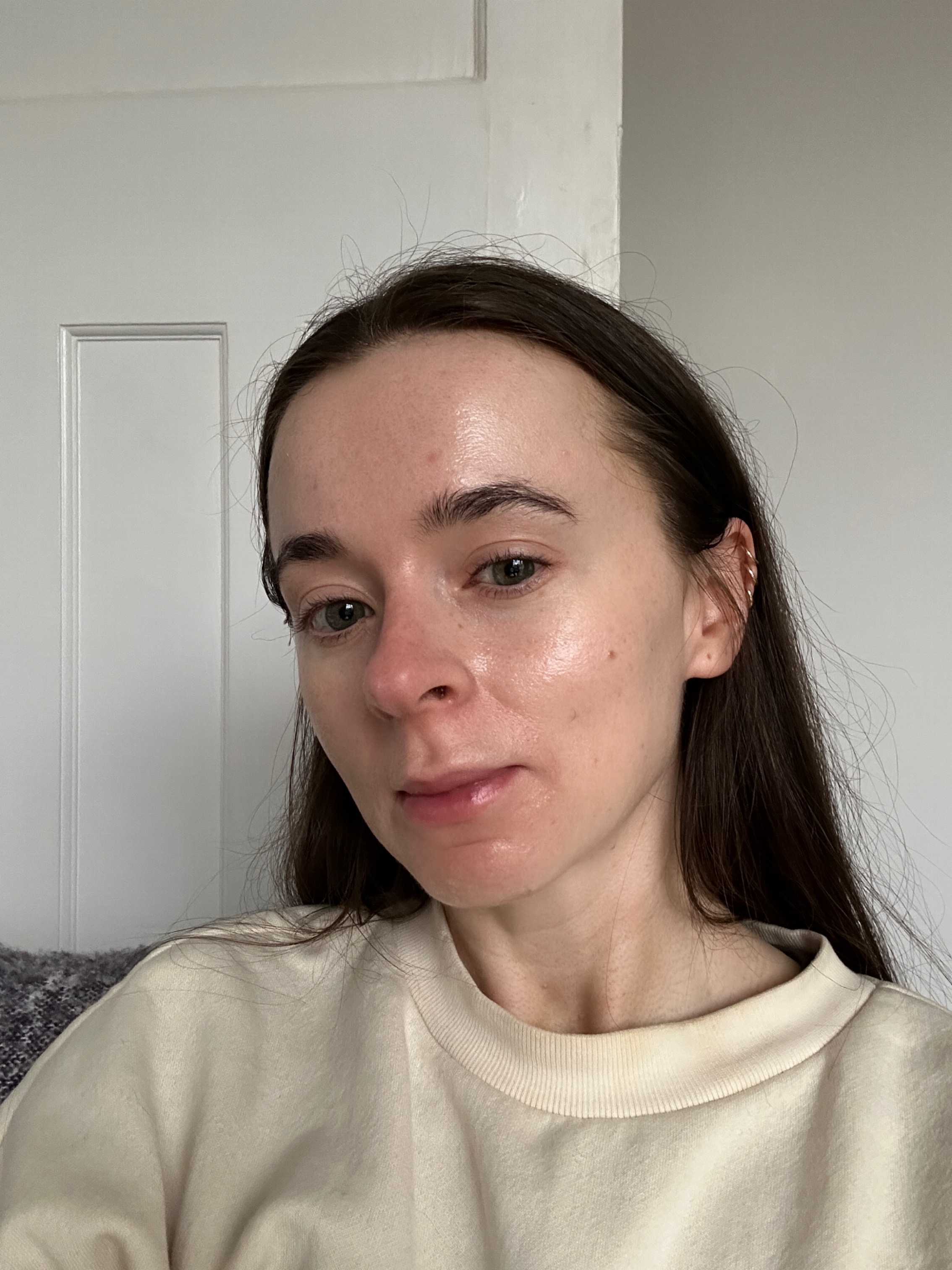I'm an Aesthetician Who Just Got a Chemical Peel—Here's My Honest Review
I know I'm not alone in noticing that my skin is at its worst in the depths of winter. Every year without fail, by January my skin is at its driest—leading to flakiness, rough texture, clogged pores, and breakouts. And to make matters worse, it looks just as dull and sluggish as it feels.
When not even the arsenal of skincare products and devices I keep at home seems to have an effect upon my skin, I know it's time to book in for a facial, and for the past few years, a chemical peel has been my go-to way to reset my skin ahead of spring. Plus, as it turns out, winter is actually the best time of year to get a chemical peel.
Before the Chemical Peel

This is because chemical peels are essentially removing the upper layer of dead skin, revealing fresh layers of skin beneath. Because these layers are new and exposed, the skin is more sensitive to UV light. But since there’s less sunlight and we're typically spending more time indoors during the winter, skin can more quickly and easily recover from a peel.
I'm also not alone in noticing an increase in dryness and congestion during winter, so it's easy to see why chemical peels are such popular treatments, especially during the winter months.
Ahead, I've run through everything you need to know about chemical peels, from how they work to how to prepare for treatment. I've also included my own review from my recent treatment at Therapie Clinic, along with some expert advice from Caroline Tinker, Clinic Manager at Thérapie Manchester.
After the Chemical Peel

What Is a Chemical Peel?
Essentially a super potent version of the acid-based exfoliating treatments you might use at home, a professional chemical peel offers deeper exfoliation via a stronger formula than those available for home use.
"The levels of active ingredients and the depths the ingredients can penetrate into the skin is increased in a professional peel," explains Tinker. "The types of peels you can purchase for use at home will be a lower dose of active ingredients to prevent adverse reactions and likely only offer an alternative method of exfoliation to the more traditional granular exfoliation."
What Are the Benefits of a Chemical Peel?
Unless your skin is incredibly sensitive then all skin types can benefit from skin peels. Tinker explains that the skin peels offered at Thérapie Clinic vary in strength depending on the skin concern, which means that rather than a one-size-fits-all treatment, your therapist will choose a peel based on how your skin looks and feels on the day of treatment. For example, as my main concerns were congestion, dull skin, and scarring, my therapist opted for a glycolic acid peel. Other options include peels that are based around salicylic acid, vitamin C, and enzymes, so the treatment really can be tailored to your individual skin.
As for the benefits, as chemical peels provide exfoliation to shed dry and dead skin cells, this aids the absorption of skincare products to increase hydration, brightens skin, reduces congestion, smooths texture, and improves the appearance of scarring. "You can have one peel and it will brighten and offer deep exfoliation leaving a natural glow and radiance to the skin," explains Tinker. "But for more severe skin concerns such as acne, scarring, and pigmentation, a course of treatments is required to achieve optimum results."
What Are the Risks and Side Effects of a Chemical Peel?
These days, advancements in peel technologies mean that leaving your appointment with red, burnt, peeling skin is highly unlikely. Providing your peel has been applied safely and that you've been honest with your therapist about any potential contraindications—for example retinoid use, then side effect will be minimal. "Some clients may experience mild swelling, dryness and/or slight sensitivity to heat," adds Tinker.
Personally, my side effects were limited to a mild tingling sensation during the peel and a slight bit of redness around my nose (which is where my skin is most sensitive) for a few hours afterwards. The following day I noticed a little flakiness around my chin and nose—which is to be expected—but within 24 hours it was super smooth and noticeably brighter.
How Should You Prepare for a Chemical Peel?
Stopping use of retinoids at least a week prior to a peel is especially important. I also focussed my routine on hydration in order to ensure my skin barrier would be super strong ahead of my peel to reduce chance of any sensitivity. For more advanced peels, Tinker advises using a glycolic cleanser as skin prep up to two weeks prior to treatment.
What Should You Expect After a Chemical Peel?
"Clients may experience a light shedding or peeling which is completely normal," explains Tinker. "You should avoid wearing makeup or having additional heated treatments, visiting a sauna, steam room, or having a hot shower for at least 48 hours, and avoid touching the face."
I kept my skincare routine super minimal and again really focused on hydration in the days following my peel. Nourishing my skin with thick creams, and keeping exfoliating acids and active ingredients like retinoids and vitamin C out to prevent any chance of irritation. it also goes without saying that use of a factor 50 SPF is essential following a peel to prevent inflammation.
My Verdict
While you may have the best and most efficient skincare routine in the entire world, there really is nothing quite like the results you get from having a professional treatment at the hands of a skincare expert—and as someone who has lived with acne-prone skin their entire life, I know this to be true.
When I first tried a chemical peel a few years ago, I loved the effect it had upon my skin, and my most recent treatment delivered equally impressive results. The change in texture was really noticeable, and my skin was clearly brighter and glowier when I compared my before and after photos, taken on the day of treatment, and a week later.
In short, if you're after a treatment which will act like a reset for your skin, helping to keep on top of congestion and remove dead skin, I'd highly recommend booking in for a chemical peel. As you can see from my after picture, my sluggish winter skin is showing the benefits—right on time for spring.
Shop At-Home Peels:

Designed to work its magic while you sleep, this innovative peel delivers microdosed ingredients in sync with your skin's natural overnight process of renewal. What's more, you can apply your moisturiser on top to keep your skin hydrated throughout the treatment.
Next Up: I Got Botox for the First Time—Here's What You Need to Know
Grace Day is a beauty editor and content creator. She has over 10 years of beauty-industry experience, spanning editorial, retail, and e-commerce, which gives her a unique understanding into how people shop for their beauty routines.
While studying for a history degree (specialising in the history of beauty) and working as a beauty adviser in department stores, Grace started writing her own beauty blog in order to share the products she discovered while dealing with acne. After graduating, she moved to Beauty Bay as beauty editor and content manager. Grace is currently a beauty contributor to Who What Wear. She has also written for Hypebae and PopSugar and works as a brand consultant and copywriter.



